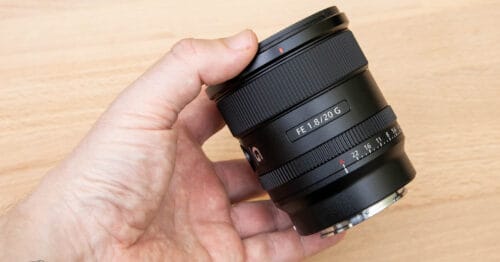When I switched from shooting Canon DSLRs to a Sony mirrorless system with the a9 II, my biggest concern was how it would handle the cold. I don’t mean chilly temperatures that might cause you to reach for some thin gloves, I’m talking about the kind of temperatures that will give you frostbite in minutes if you aren’t properly dressed. Living in the Yukon as I do now, I need gear that will work well below -20 Celsius. In fact just this morning it was -38 Celsius!
Two main things were of concern to me, and there was very little reliable information out there before I purchased the camera. Firstly: battery life. Secondly: EVF performance.
As far as general performance in cold weather, I haven’t had any issues so far. In fact, during an overnight camp out in my photography blind with both my old Canon 5D Mark IV and my Sony A9 II where temps got down to -25 Celsius, it was the Sony that actually turned on faster in the morning, and whose screens and menus functioned more responsively. This is actually an important test because the overnight camp meant the actual camera temperatures had dropped down to that ambient temperature of -25C. You could venture out on a colder day for a few hours, but if the camera was in a big backpack it would never actually get down to those temperatures.
In terms of battery performance, it has been a pleasant surprise. Whilst I certainly don’t get as long from one of the Sony NP-FZ100 batteries as I did from a Canon LP-E6N, it’s not a drastic difference and if I have three batteries with me that seems to easily get me all day shooting (many thousands of photos at 20fps) in cold conditions. It’s really a non-issue, and in my estimation, while the battery lasts a little less, it’s actually shooting more images due to the hugely increased frame rate. CIPA battery life rating is 500 shots with the EVF on a single battery but in practice, in the real world, I’m getting WAY more than that. If I’m shooting quickly, I’d estimate I can actually get over 2000 shots on a single battery. Just goes to show you that the CIPA battery rating system is pretty useless.
In fact, the Sony cameras are much easier to charge because you can charge them with USB-C battery packs while you go, and unlike Canon’s EOS-R mirrorless cameras, you don’t even need to use special battery packs or chargers with the USB Power Delivery protocol. Literally, any USB-C source will charge a Sony camera, even when it is turned off. I have taken to using this Anker PowerCore 10,000 PD pack in my camera bag.
The second issue of concern to me was the EVF refresh rate at cold temperatures. Anyone that has used electronic equipment in the extreme cold will know that LCD screens can sometimes have trouble. They often slow down and display ghosted images and terrible refresh rates. I actually experienced this with the Nikon Z7 EVF when I tested it, and it made it a real pain in the ass to use for anything other than static landscape shots.
Thankfully I have had no such issue with the A9 II at this point. I haven’t even seen a hint of a frame rate reduction at cold temperatures, even when I’m out on a cold morning that is cold enough to render the LCD dashboard on my car totally useless until it warms up. Great news!










Good to know. Thanks.
Is button feel still crap with the 9II?
Feels ok to me. Not something I have specifically noticed since switching to this camera from my old Canons. No real experience with previous Sonys to compare to.
Considering that all the EVFs of the major camera manufacturers all use OLED I find it highly unlikely that a Nikon Z7 would NOT work properly but a Sony A9ii would. Point being that both are using the exact same technology, OLED. Many OLED screens are rated down to -40° C. If one OLED starts to freeze up at a certain temperature they pretty much all are. Considering that in your description you said that your a9ii was at ambient temperature it’s even less likely that Sony has some sort of insulation as by the point the camera reaches ambient temperature any insulation is pointless. I also highly doubt that Sony has stuck some kind of warming feature in the off chance that people find themselves minus 20° C or below.
Case in point, I have a friend in Anchorage and he’s never had issues when shooting with his Z7 further north in the cold. That gels with a review done by a guy who shot video and photography in Antarctica using a Z7. I don’t recall him saying anything about the EVF.
“I find it highly unlikely that a Nikon Z7 would NOT work properly but a Sony A9ii would”
What can I say? I saw it with my own eyes. You should also watch Morten Hilmer’s videos on YouTube about his arctic travels with the Z-series. He had all sorts of issues in the cold.
I think you are also putting far too much faith in your idea that all OLEDs are going to be the same. The refresh rate of the a9 II EVF is already far quicker than any other mirrorless camera.
Hi Dan,
Good to know on the A9II. I go out in northern MN to shoot dog sled races in January. What type of gloves do you use when the temps are that cold? I cannot seem to find a glove or glove/ mitt combo that works for me. Thanks!
I have an extensive guide to the best photo gloves on the market: https://shuttermuse.com/photography-gloves/